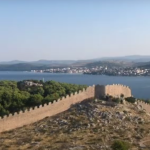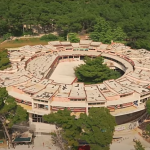ZAGREB, October 31, 2019 – The government on Thursday forwarded to the parliament a draft energy strategy of Croatia in the period until 2030 with an outlook for the period until 2050, which envisages a much higher share of energy from renewable sources, greater energy efficiency and a reduction of greenhouse gas emissions.
“The main purpose of this strategy is to ensure energy independence, a safe and sustainable supply, as well as the development and competitiveness of the energy system, in the context of accomplishing the vision of a common energy-climate policy in Croatia and at the EU level,” said Prime Minister Andrej Plenković.
Environment and Energy Minister Tomislav Ćorić said that the strategy’s goals included reducing dependence on energy imports and strengthening the supply of energy products by developing strategic infrastructure, one of such projects being the liquefied natural gas (LNG) terminal on the island of Krk.
The strategy is based on growing, flexible and sustainable energy production, development of new infrastructure and alternative energy supply routes, and greater energy efficiency, the purpose being the accomplishment of the EU’s climate neutrality by 2050.
“The strategy will enable Croatia to transition to low-carbon energy, primarily by increasing energy efficiency and by increasing the use of renewables,” said Ćorić, adding that Croatia already fared relatively well in terms of the use of renewable energy sources.
At the end of 2018, the share of renewables in total energy consumption was 28%, which is more than regulated by the EU, the minister said, but added that he wanted the share of renewables in total consumption and production to be the highest possible in the coming period.
He noted that in the period until 2030 the share of renewables was expected to increase to a minimum 32% with a potential increase to 36.4% while in the period until 2050 the share was expected to rise to 65%.
In 2017, the share of renewables in total domestic energy consumption was 27.3%.
The implementation of the energy strategy requires significant investments in energy efficiency in the context of reducing total energy consumption in the next ten years and beyond.
The third main goal of the strategy is a radical cut in CO2 emissions.
The minister also noted that emphasis would be put on the production of wind and solar energy as well as other types of energy.
The funds required to implement the strategy range between HRK 378 and 461 billion or between 12.5 and 15 billion kuna annually. Investments will be more intensive in the period until 2030 (14-17 billion kuna) and in the period from 2031 to 2050 they will amount to between 12 and 15 billion.
More energy news can be found in the Business section.







